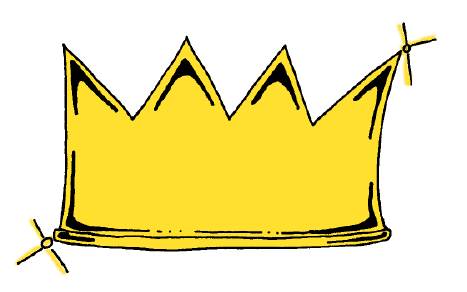Archimedes and the King's Gold Crown
About 2000 years ago, King Hieron of Syracuse asked his goldsmith to make a crown out of a lump of pure gold. When the beautiful new crown arrived, King Hieron admired it, but he was also suspicious. Did the goldsmith keep some of the gold for himself and replace it with less valuable silver? King Hieron turned to his good friend Archimedes, the most famous mathematician and inventor of his day, and asked him to find out.
Archimedes found that the mass of the crown was the same as the mass of the lump of gold, but the king was still suspicious. Archimedes knew that 1 pound of silver had a smaller volume than 1 pound of gold. He reasoned that if the goldsmith had substituted some silver, then the volume would be different. But he needed to find a way to measure the volume without melting down the crown.
Puzzling over the problem, Archimedes chanced to come to one of the city's bathhouses. As he eased himself into the full tub, he noticed that the water rose and spilled over the side. Archimedes immediately realized that he had found a method for solving the puzzle. He could put the crown in water. The amount of water that spilled out would be equal to the volume of the crown! If it were different from the volume of the same mass of gold, he would know that the crown was not pure gold.

Archimedes was so excited about his discovery that in his joy he leaped out of the tub, and, rushing towards his home, he cried out, “Eureka! I have found it.” What Archimedes had discovered over 2000 years ago was a way to find the volume of an object. This enabled him to compare the density of materials. If two objects have different densities, then they must be made from different materials. Unfortunately for the goldsmith, the crown was not pure gold, and the goldsmith lost more than his stolen gold.












